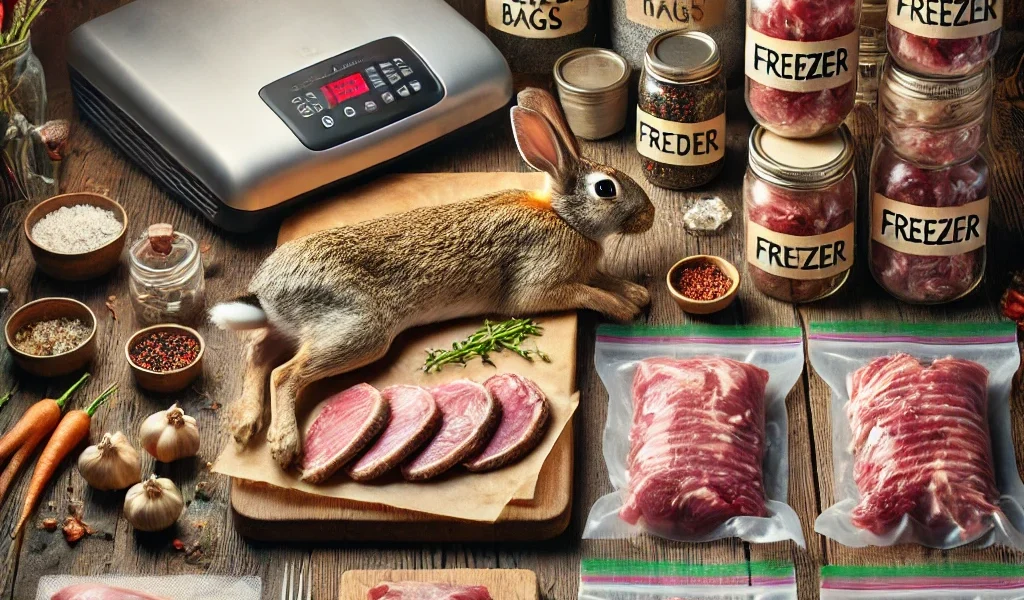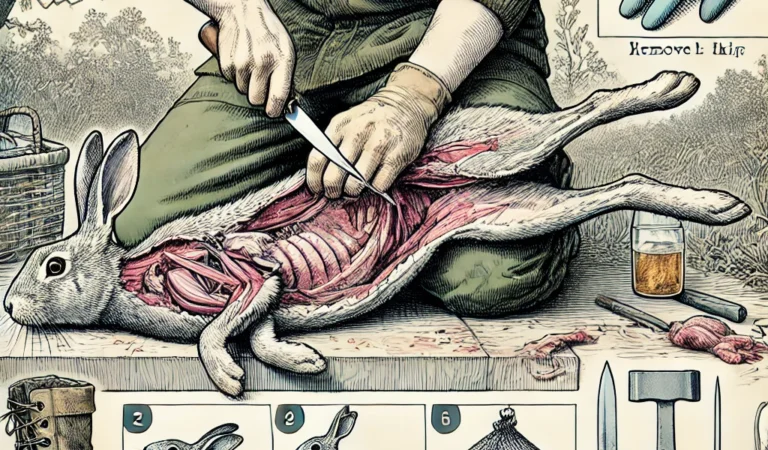Preserving Rabbit Meat: Powerful Tips for 2024
Nothing’s worse than having your hard-earned rabbit meat go to waste. Whether you’re a homesteader, hunter, or small-scale farmer, knowing how to preserve rabbit meat can help you enjoy your harvest year-round. Let’s dive into preserving rabbit meat in any environment.

Safety First: Before You Start
Before we jump into preservation methods, let’s cover some basics:
- Process meat within 24 hours of harvest
- Keep everything clean and sanitized
- Use food-grade materials only
- Follow proper temperature guidelines
- When in doubt, throw it out
Freezing: The Easy Option
Let’s start with the simplest method most folks use.
Quick Steps for Freezing
- Clean and cut meat into portions
- Remove all silver skin and fat
- Double wrap in freezer paper
- Label with date and contents
- Freeze at 0°F or below
Pro Tips:
- Vacuum seal for best results
- Use within 6 months
- Avoid freezer burn by wrapping tightly
- Freeze pieces separately for easier thawing
Canning: Long-Term Storage Solution
Canning is my favorite way to preserve rabbit for shelf-stable storage.
Essential Equipment
- Pressure canner (NOT a water bath canner)
- Clean canning jars
- New lids and rings
- Jar lifter
- Funnel
Step-by-Step Canning Process
- Prepare your meat
- Cut into chunks
- Remove excess fat
- Pack loosely in jars
- Add to jars
- 1 tsp salt per quart (optional)
- Leave 1-inch headspace
- NO other ingredients needed
- Process
- 10 pounds pressure (adjust for altitude)
- 75 minutes for pints
- 90 minutes for quarts
Safety Tips:
- Always check seals before storing
- Store in cool, dark place
- Use within 1-2 years
- Check for signs of spoilage
Curing: The Traditional Method
Curing adds flavor while preserving meat.
Basic Dry Cure Recipe
- 1 cup kosher salt
- 1/2 cup sugar
- 2 tablespoons pink curing salt #1
- Your favorite seasonings
Steps:
- Mix cure ingredients
- Coat meat thoroughly
- Refrigerate 5-7 days
- Rinse and dry
- Smoke or air dry
Wet Curing (Brining)
- Mix brine solution
- Submerge meat completely
- Keep refrigerated
- Cure for 5-7 days
- Rinse before cooking
Short-Term Storage Tips
If you’re planning to use your rabbit within a few days:
Refrigerator Storage:
- Keep below 40°F
- Use within 2-3 days
- Store on bottom shelf
- Keep wrapped tightly
Long-Term Storage Options
Besides freezing and canning:
Dehydrating:
- Slice meat thinly
- Season as desired
- Dry at 145°F
- Store in airtight containers
Smoking:
- Cure first
- Smoke at 225°F
- Store in refrigerator
- Use within 2 weeks
Common Preservation Mistakes
- Poor Temperature Control
- Solution: Use thermometers
- Monitor regularly
- Keep logs if necessary
- Cross-Contamination
- Use clean equipment
- Sanitize surfaces
- Wash hands frequently
- Improper Storage
- Use appropriate containers
- Check seals regularly
- Store at proper temperature
Signs Your Preserved Meat Has Gone Bad
Watch for:
- Off odors
- Strange colors
- Bulging cans
- Broken seals
- Mold growth
Storage Time Guidelines
Room Temperature (Properly Canned)
- Up to 2 years
- Cool, dark place
- Check seals monthly
Refrigerator
- Fresh: 2-3 days
- Cured: 1-2 weeks
- Cooked: 3-4 days
Freezer
- Whole: 6 months
- Ground: 3-4 months
- Vacuum sealed: 8-12 months
Tips for Success
- Label Everything
- Date processed
- Contents
- Processing method
- Use-by date
- Rotate Stock
- Use oldest first
- Check dates regularly
- Keep inventory list
- Quality Control
- Start with fresh meat
- Use proper equipment
- Follow recipes exactly
- Keep everything clean
Remember: Proper preservation isn’t just about making meat last longer – it’s about keeping your family safe while enjoying your harvest year-round.






